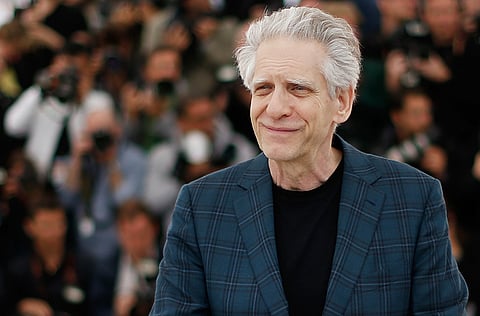David Cronenberg, Tommy Lee Jones screen movies at Cannes
‘Winter Sleep’ and ‘Mr Turner’ are currently frontrunners to win the Palme d’Or

Canadian David Cronenberg presented a director’s take on a Hollywood infected by taboo sex and backstabbing, plus a few ghosts, while Tommy Lee Jones turned the Western around for a perilous eastward trek with madwomen at Cannes on Sunday.
Jones’ The Homesman and Cronenberg’s Maps to the Stars were the two competition films shown on the fifth day of the 12-day festival, giving it a heavily North American flavour.
One critic for a major trade publication, who did not want to be quoted by name before a review appeared in print, said Cronenberg’s film was “very disappointing and very uneven”. It stars Twilight idol Robert Pattinson as a Hollywood wannabe working as a chauffeur and Mia Wasikowska as a schizophrenic.
The Hollywood Reporter called Jones’ film “an absorbing, melancholy look at the hard lot of women in the Old West”. It co-stars Jones and two-time Oscar best actress winner Hilary Swank as a team escorting the madwomen.
The Cannes awards, including the top Palme d’Or prize for best picture at the world’s most prestigious film festival, will be given on Saturday.
Of the main competition films shown since the festival opened on Wednesday, Turkish director Nuri Bilge Ceylan’s Winter Sleep and British director Mike Leigh’s Mr Turner are tied with the highest rankings in a compilation of opinions of international critics by Screen International magazine. Both get ratings of 3.6 stars out of a possible 4.
Twisted characters
Maps to the Stars, with a screenplay by Los Angeles writer and actor Bruce Wagner, features a cast of twisted characters.
They include a child actor recovering from a drug habit, his schizophrenic sister, their ambitious parents who have a dark secret, and a has-been actress who is desperate to re-create a role played by her mother, who died in a fire.
Ghosts of the actress’ mother, a drowned child and a girl who died in hospital shortly after a visit from the child actor give the film a supernatural patina, suggesting that Hollywood is not just a city of dreams but of nightmares.
Little more can be revealed that would not be a spoiler.
Based on a novel by Glendon Swarthout, The Homesman includes the usual gunfights and hostile Indians, though at a press conference Jones rejected the idea that the portrayal of native Americans was a “stereotype”.
The people playing the Indians were “all native Americans, they were all of Pueblo descent”, Jones said. The costumes they wore were thoroughly researched to help them look like the hostile Pawnees they portray in the movie.
“I’m not ashamed of the fact that they were considered by our characters to be potentially homicidal. We were not bending the truth at all or stereotyping anybody,” he said.
Extreme hardships
What is unusual is the stark portrayal of the extreme hardships faced by young women trying to survive, raise families and cope with extreme weather and disease. One of the madwomen had three babies die of diphtheria.
Nebraska, where the movie is set, was “not a really inviting place for a woman of the Victorian era”, Jones said.
Asked what it was like acting and directing, Jones said: “As the director, I can tell you I did everything I tell myself to do and as an actor I listen very carefully.”
Swank plays Mary Bee Cuddy, an unmarried woman whose farm is successful but who cannot find a husband and agrees to lead the wagon trip to take the madwomen east with Jones. She said the role showed how resourceful frontier women had to be.
“We’re talking about a time that was extreme in every way,” Swank said. “It was a hard, hard time, a hard place to live — the elements, the idea of doing it alone, the idea of wanting a partner to share in it, someone to love, someone to have her back.”
Conditions on location in New Mexico during the winter drove home for her how hard life had been, Swank said. “When it was cold, it was freezing, when it was windy, you had sand in your nose, ears and mouth.”
Sign up for the Daily Briefing
Get the latest news and updates straight to your inbox



